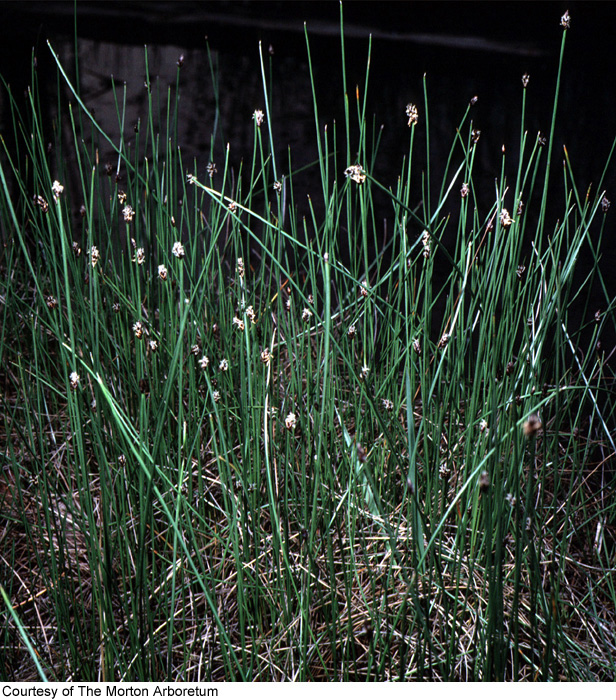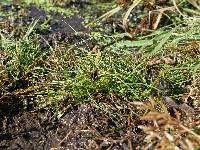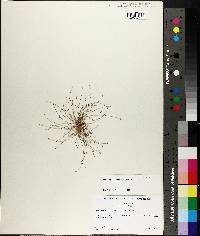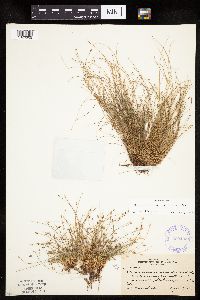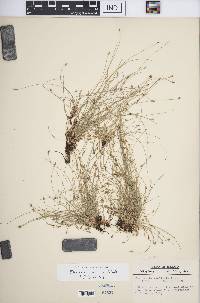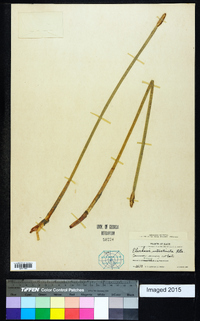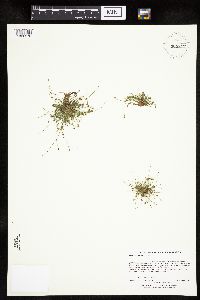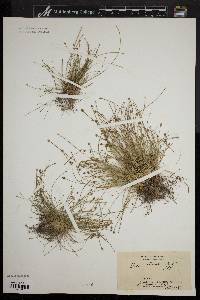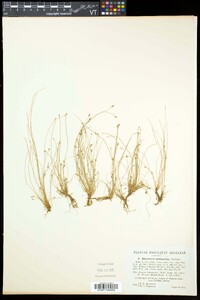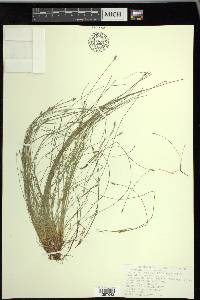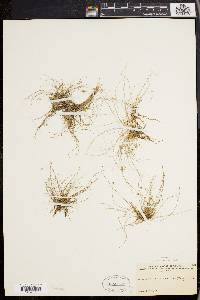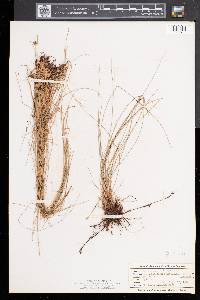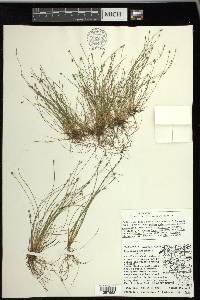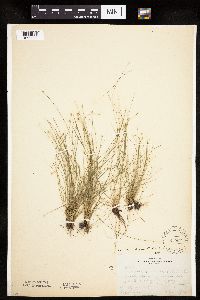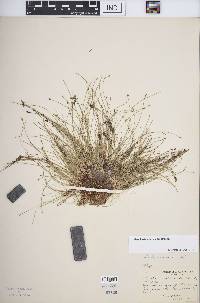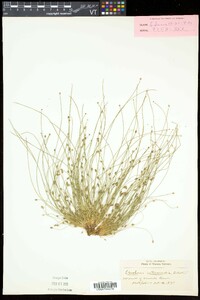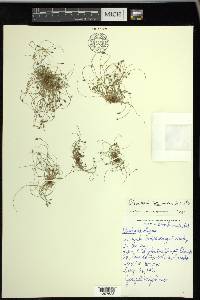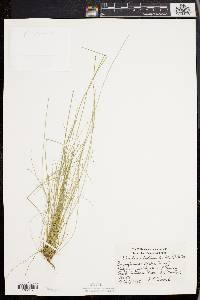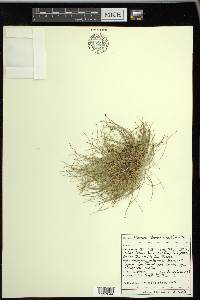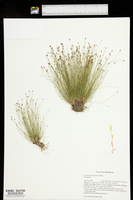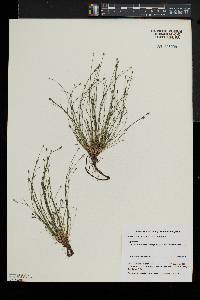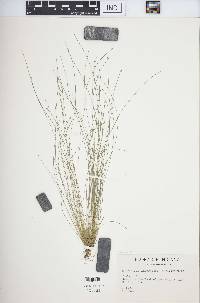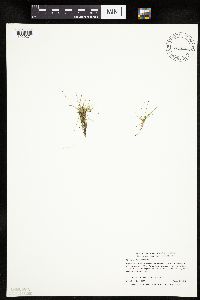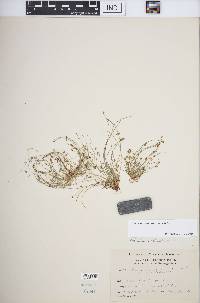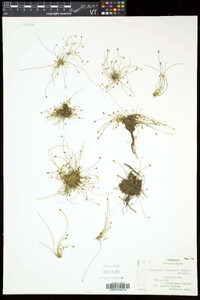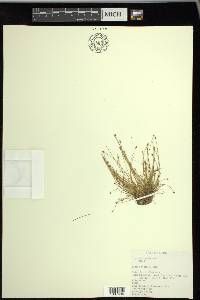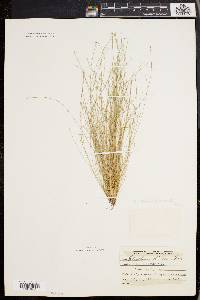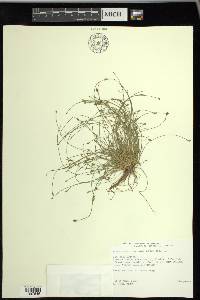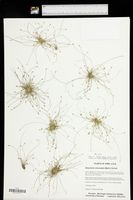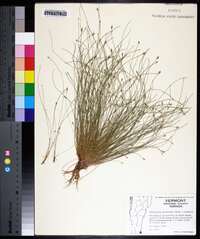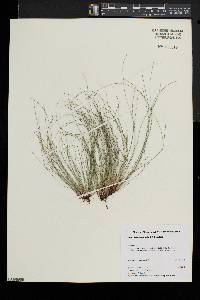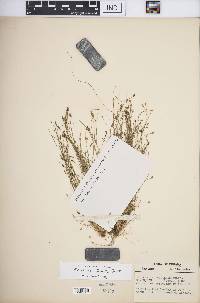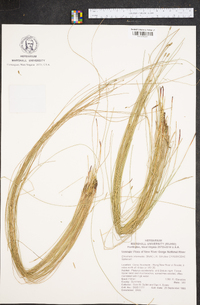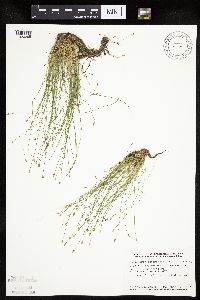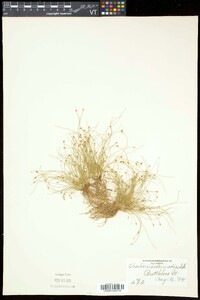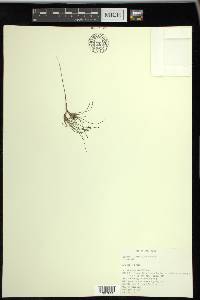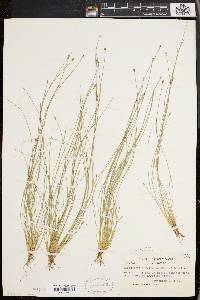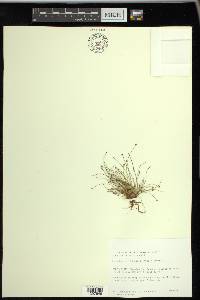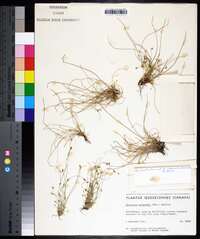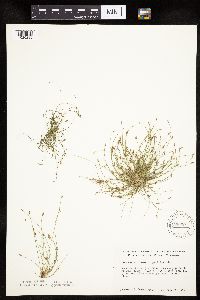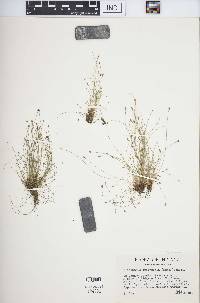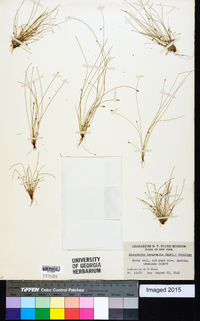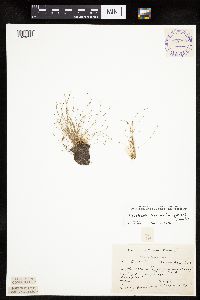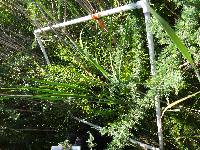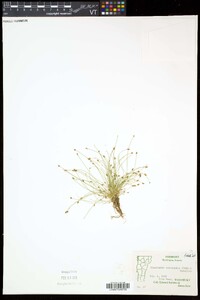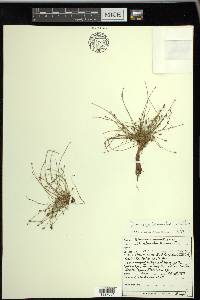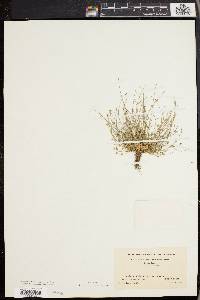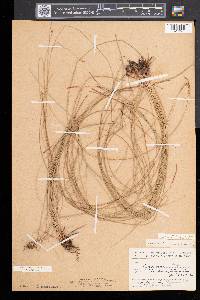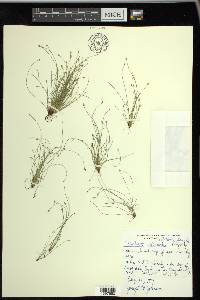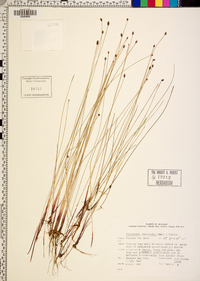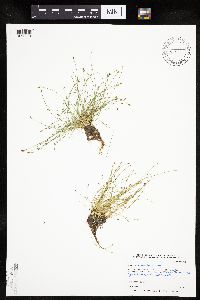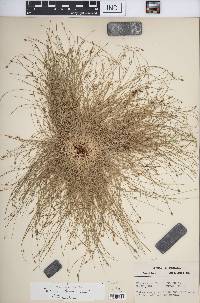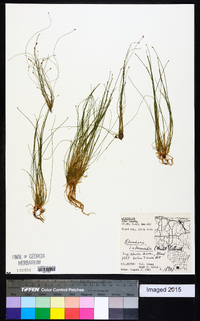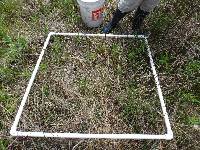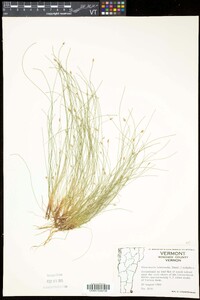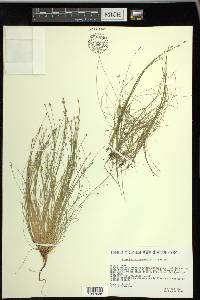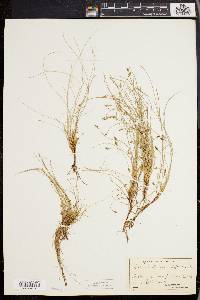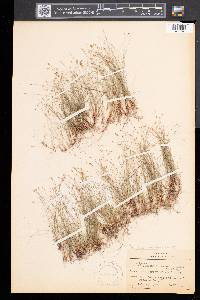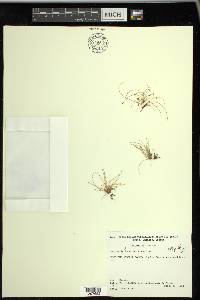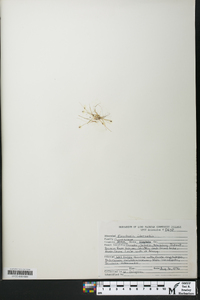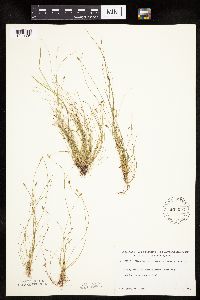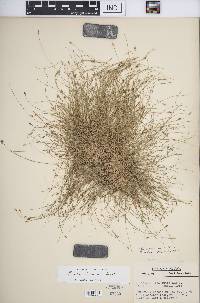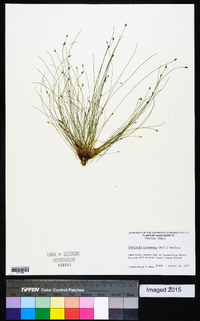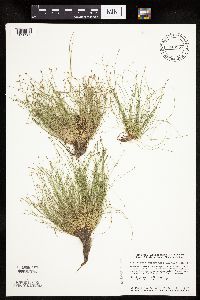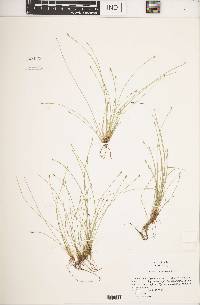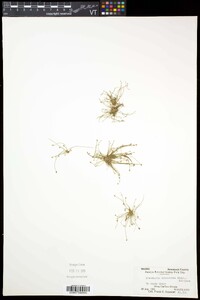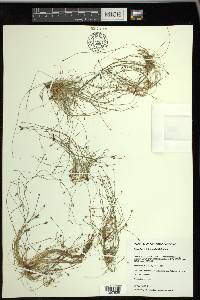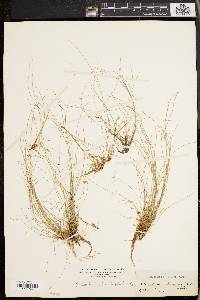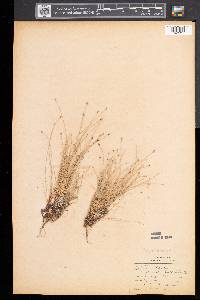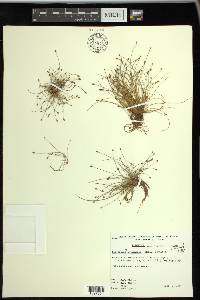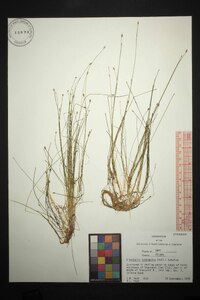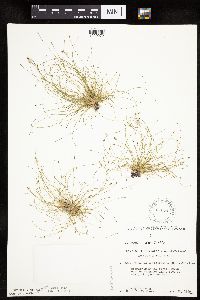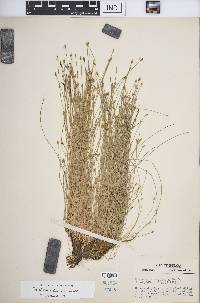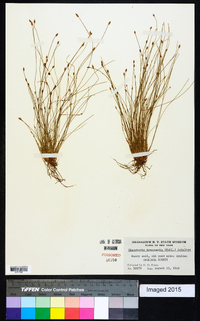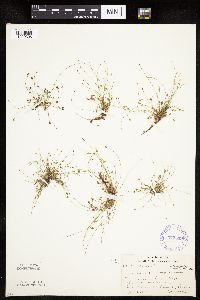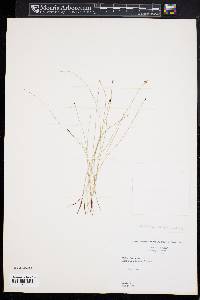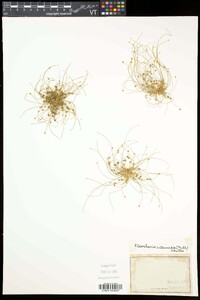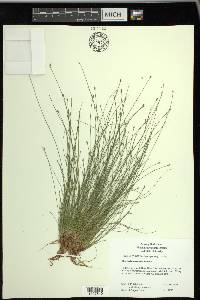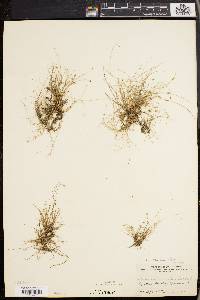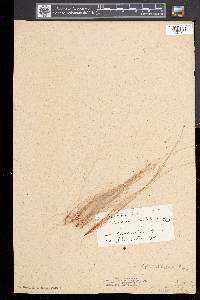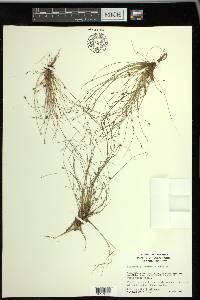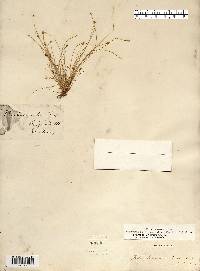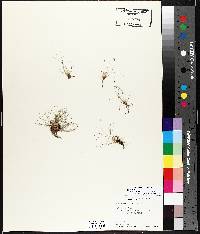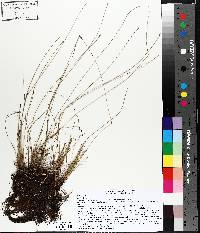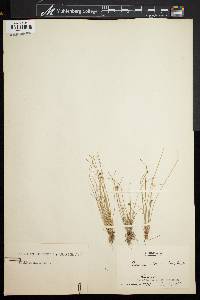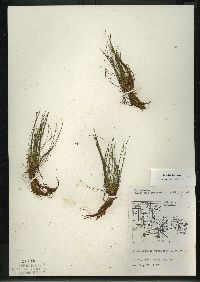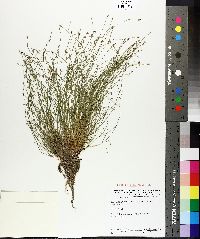Eleocharis intermedia
|
|
|
|
Family: Cyperaceae
Intermediate Spike-Rush, more...matted spikerush
[Eleocharis reclinata Kunth] |
Plants annual, densely tufted; rhizomes present, inconspicuous, erect or ascending, 0.5 mm thick, internodes less than 2 mm, scales disintegrating, 3 mm, membranous-translucent. Culms often arching or recurved or reclining, their spikelets usually all fruiting simultaneously, long to very short in 1 tuft, subterete, 4-40 cm × 0.2-0.5 mm, soft. Leaves: distal leaf sheaths persistent and evident or disintegrating (fugaceous) and not evident, proximally green or stramineous, brown, reddish, or purple, distally stramineous to green or colorless, papery to membranous, apex subacute to acuminate, sometimes with linear blade to 1 mm. Spikelets: basal spikelets absent (often some spikelets subsessile); never proliferous, ovoid, terete, 2-10 × 1-2 mm, apex acute; proximal scale empty or with a flower (usually in the same plant), deciduous or some persistent, amplexicaulous, similar to other scales (except apex sometimes rounded); subproximal scale with a flower; floral scales spiraled, 5-30, 5-6 per mm of rachilla, pale brown to colorless, often spotted brown, ovate, 1.5-2 × 1 mm, thinly membranous to translucent, midribs often green, evident to obscure, apex acute. Flowers: perianth bristles 6-7, pale brown to stramineous or whitish, slender, equaling to exceeding tubercles or rarely rudimentary to less than 1/2 achene length; spinules sparse, retrorse, sharply acute; stamens 3 (sometimes fewer-); anthers 0.2-0.5 mm; styles 3-fid. Achenes golden brown, narrowly obpyriform, proximally markedly narrowed, compressed-trigonous, angles slightly prominent, 0.9-1 × 0.6-0.75 mm, finely reticulate or pitted or papillose at 20-30X, apex usually constricted proximal to tubercle. Tubercles brown, narrowly pyramidal to linear, trigonous, 0.3-0.4 × 0.1-0.25 mm. 2n = 22. Fruiting (spring-)summer-fall. Fresh wet, often marly places along streams, lakeshores, tidal meadows, disturbed areas; 10-100 m; N.B., Ont., Que.; Conn., Ill., Ind., Maine, Md., Mass., Mich., Minn., Mont., N.H., N.J., N.Y., Ohio, Pa., Tenn., Vt., Va., W.Va., Wis. The flowers are mostly cleistogamous, with stigmas and stamens remaining enclosed in the floral scales except sometimes on the shortest culms. We have not seen specimens to confirm literature reports of E. intermedia from Iowa. Eleocharis intermedia perhaps should be placed in sect. Intermediae (Svenson) Zinserling following I. Kukkonen (1990). H. K. Svenson (1929) placed it in his E. ser. Intermediae (name invalid) but later (1937, 1957) placed it in his E. subser. Truncatae (name invalid), and M. S. González-E. and P. M. Peterson (1997) placed it in E. subser. Truncatae. However, E. intermedia differs from all other members of ser. Eleocharis in its annual, tufted habit without evident, creeping rhizomes, culms varying in one tuft from long to very short, often with some spikelets subsessile, all spikelets of a tuft fruiting simultaneously, and the proximal scale often subtending a flower. It was placed in ser. Tenuissimae because of a resemblance to some other species of that series; closer observation reveals that it differs substantially in its achenes or habit from other members of ser. Tenuissimae. It rather closely resembles E. flavescens var. olivacea and E. geniculata in 8a2a. ser. Maculosae as well as small plants of species in 8a2b. ser. Ovatae. Eleocharis macounii Fernald had been treated as a distinct species, or included within E. intermedia, E. obtusa, or E. ovata in the broad sense (including E. obtusa). P. M. Catling and S. G. Hay (1993) presented morphologic evidence suggesting that E. macounii Fernald is a hybrid between E. intermedia and E. obtusa, and named it E. ×macounii (Fernald) P. M. Catling & S. G. Hay. It is known only from the type collection from 1893 and a second collection from 1987, both from along the Gatineau River north of Ottawa in southwestern Quebec. Its habit is very similar to that of E. intermedia, from which it differs mainly in its achenes lenticular to trigonous in the same plant, the two or three angles prominent, keeled, costate, the surface smooth or very finely reticulate or pitted at 30X, and tubercles 0.2-0.5 mm wide. It produces few achenes, whereas E. intermedia and E. obtusa usually produce abundant achenes. In the protologue M. L. Fernald (1899) compared E. macounii with the Eurasian E. carniolica W. D. J. Koch. H. K. Svenson (1929, 1937) compared it with both E. intermedia and the Eurasian E. multicaulis (Smith) Smith and later (1957) placed it in synonymy under E. obtusa. Pending further research, it seems best to treat the two known collections of E. macounii as probable hybrids between E. intermedia and either E. obtusa or E. ovata; all three species are sympatric in the region where the collections of E. macounii were made (P. M. Catling and S. G. Hay 1993; B. M. H. Larson and P. M. Catling 1996).
Annual herb with slender rhizomes, densely tufted 4 - 40 cm tall Leaves: reduced to bladeless sheaths (sometimes with a tiny linear blade), basal, two per culm, margins fused and enclosing culm, green or straw-colored to reddish basally, with a more or less pointed apex, papery to membranous, sometimes disintegrating. Flowers: minute, spirally arranged on the axis of the spikelet, lacking sepals and petals, with six to seven bristles, subtended by a scale. Bristles whitish or straw-colored to light brown, often slightly longer than the achene, slender. Stamens typically three, exserted. Anthers to 0.5 mm long. Pistil one. Style three-cleft. Fruit: a one-seeded achene, yellowish brown, about 1 mm long and 0.5 mm wide, narrowly reverse pear-shaped, compressed three-angled, finely wrinkled or bumpy or pitted (at 20-30X). Tubercle brownish, tiny, linear to narrowly pyramidal, three-angled. Seed with a thin, non-adherent wall. Culm: reclining or ascending or recurved, unbranched, 4 - 40 cm long, to 0.5 mm wide, unequal in length, nearly circular in cross-section, enclosed basally by two fused sheaths. Spikelets: solitary, 2 - 10 mm long, 1 - 2 mm wide, egg-shaped with a pointed apex, circular in cross-section, with five to thirty floral scales. Scales spirally arranged and overlapping, colorless to light brown, often with brown spots and a green midrib, 1.5 - 2 mm long, about 1 mm wide, egg-shaped with a blunt or pointed apex, translucent to membranous. Similar species: No information at this time. Flowering: mid-May to late September Habitat and ecology: Locally frequent on river banks and on the borders of calcareous marshes. Found occasionally in rivulets or shallow water. Occurence in the Chicago region: native Notes: The stigmas and stamens of this plant remain enclosed in the floral scales and is therefore self-pollinating (cleistogamous). However, this may not be the case on some of the shorter culms. Etymology: Eleocharis comes from the Greek words heleios, meaning "dwelling in a marsh," and charis, meaning grace. Intermedia means intermediate. Author: The Morton Arboretum Densely cespitose; stems reclining or ascending, capillary, very unequal, 5-25 cm; sheaths truncate or somewhat oblique, the projecting lobe acute, no longer than its diameter; scales obtuse or the upper acute, with brown sides, the lowest one empty; bristles pale brown, usually slightly longer than the achene; anthers less than 0.5 mm; style trifid; achene trigonous, light olive or yellowish, 1 mm, the narrow tubercle conic-subulate, a third to half as long; 2n=22. Wet soil; Que. to Minn., s. to Pa., w. Va., Tenn., and Io. (E. macounii) Gleason, Henry A. & Cronquist, Arthur J. 1991. Manual of vascular plants of northeastern United States and adjacent Canada. lxxv + 910 pp. ©The New York Botanical Garden. All rights reserved. Used by permission. From Flora of Indiana (1940) by Charles C. Deam Muddy borders of ponds and lakes, wet, marl borders of lakes, and in the outlets of springs. ...... Indiana Coefficient of Conservatism: C = 10 Wetland Indicator Status: OBL |

